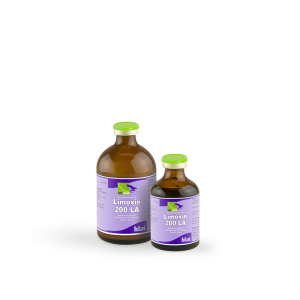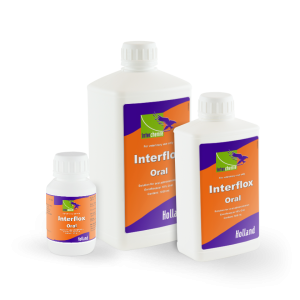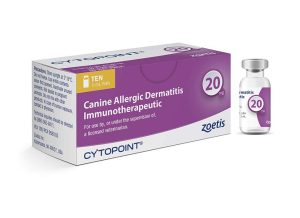Limoxin-200 LA

Limoxin-200 LA
- Composition
- Oxytetracycline base – 200 mg.
Description
Oxytetracycline belongs to the group of tetracyclines and has bacteriostatic action against many Gram-positive and Gram-negative bacteria like Bordetella spp., Campylobacter spp., Chlamydia spp., E. coli, Haemophilus spp., Mycoplasma spp., Pasteurella spp., Rickettsia spp., Salmonella spp., Staphylococcus spp. and Streptococcus spp. The action of oxytetracycline is based on inhibition of bacterial protein synthesis. Oxytetracycline is mainly excreted in urine, for a small part in bile and in lactating animals in milk.
Indications
Arthritis, gastrointestinal and respiratory infections caused by oxytetracycline-sensitive microorganisms like Bordetella spp., Campylobacter spp., Chlamydia spp., E. coli, Haemophilus spp., Mycoplasma spp., Pasteurella spp., Rickettsia spp., Salmonella spp., Staphylococcus spp. and Streptococcus spp. in cattle, calves, sheep, goats and swine.
Contra indications
Hypersensitivity to tetracyclines.
Administration to animals with a seriously impaired renal and/or hepatic function.
Concurrent administration of penicillins, cephalosporins, quinolones and cycloserine.
Side effects
After intramuscular administration local reactions can occur, which disappear in a few days.
Discolouration of teeth in young animals.
Hypersensitivity reactions.
Dosage
For intramuscular or subcutaneous administration.
General:
1 ml per 10 kg body weight.
This dosage can be repeated after 48 hours when necessary.
Do not administer more than 20 ml in cattle, more than 10 ml in swine and more than 5 ml in calves, goats and sheep per injection site.
Withdrawal times
– For meat: 28 days.
– For milk: 7 days.
Whilst every effort has been made to provide the correct information on these product sheets, some of the information may not be correct. Please check the original label prior to any application of the product.
View Next
- Calf, Lambs/Kids, Pigs, Poultry
- Beef, Horses, Pigs







